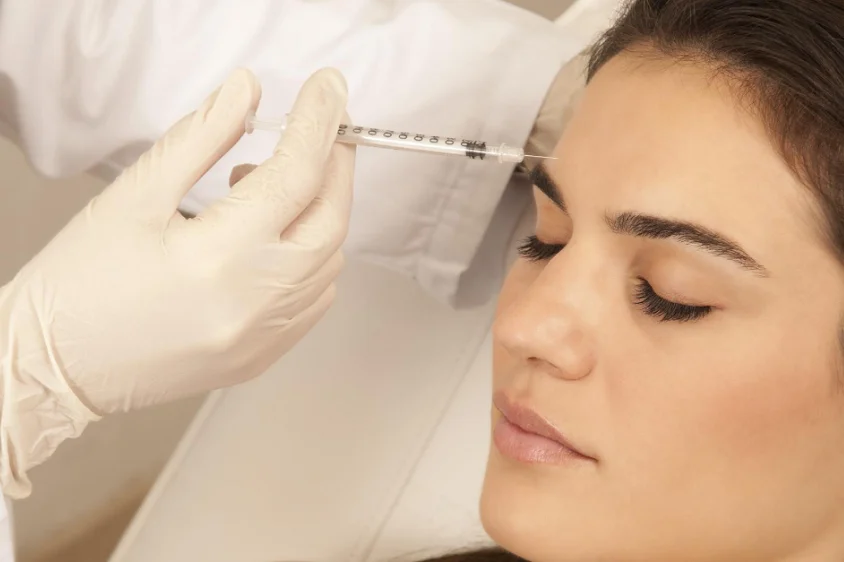Botox Treatments: What Is the Science Behind Them?
- Updated on: Oct 15, 2024
- 4 min Read
- Published on Oct 15, 2024

While Botox used to be reserved for people who wanted to look younger, this magic of medicine has evolved to find its place in many other healthcare facilities today. From eliminating wrinkles to resolving migraines, Botox is a multi-faceted marvel.
However, how this procedure works continues to be misunderstood. Although this protein is named after the toxin that produces it — Clostridium botulinum, to be precise — the treatment isn’t dangerous if a trained professional performs it. In fact, you can even hire someone to do you botox at home!
The key is to ensure that the person providing this treatment understands the science behind the Botulinum toxin. We’ve compiled the basics of how Botox works to help you navigate this intriguing and effective cosmetic and medicinal treatment.
What is Botox?
Short for Botulinum toxin, Botox is a protein that actively promotes muscle relaxation. Scientifically, it blocks the neurotransmitter acetylcholine from using the nerves to signal the muscles to contract. Botox weakens the contractions at various dosages; at other dosages, it turns them off completely.
Because wrinkles and lines are caused by the repetition of facial muscles, reducing contractions reduces the appearance of these signs of aging, such as crow’s feet, laugh lines, and forehead wrinkles. Beyond appearances, though, the effects of Botox can also minimize the symptoms of health problems like migraines and compulsive sweating.
How Does Botox Work?
Botox is applied with a needle. The chemical is injected into a specific muscle chosen because of its location and connection to the targeted area. Once injected, the protein reaches the nerves around the muscle, bonding to them and blocking the release of the neurotransmitter acetylcholine.
When the signal is interrupted, the muscle can’t contract anymore. This relaxation or paralysis is temporary, but the length of the effects depends on various factors, such as Botox dosage and the muscle’s location. During this relaxed state, the skin around the muscles smoothes out, and wrinkles are reduced or disappear.
Is Botox Safe?
Botox injections are offered in healthcare facilities and spas as a treatment for wrinkles, lazy eyes, overactive bladder, neck spasms, and much more. In the medical field, these injections aren’t just safe; they’re approved by the Food and Drug Administration for the treatment and prevention of migraines.
Yet, there’s confusion behind Botox because of how it’s produced. The medicine in the injections that we use for medical treatments comes from botulism, a toxin that causes food poisoning. Because of its origins, many people consider Botox to be dangerous. However, licensed healthcare providers use a form of purified botulinum toxin that, when administered correctly, is not harmful.
What Can Botox Treat?
Scientifically, Botox might be a potential solution for plenty of conditions. Because the ultimate effect is the relaxation of muscles connected to the nerves where the Botox is injected, any health problem caused by contracted muscles may be relieved, such as:
- Muscle spasms: When your neck, back, or other body parts continually spasm, the muscles contract painfully. These contractions are uncontrollable, causing you to move in ways that are also uncomfortable. Botox may be able to reduce the contractions and minimize the symptoms of your condition.
- Migraines: Those who suffer from regular, chronic migraines may be a candidates for Botox injections. This treatment doesn’t always stop the migraines but can reduce their occurrence. Treatment for chronic migraines requires an injection every three months for ongoing benefits.
- Lazy eye: Lazy eye is caused by muscle imbalances. When the muscles that move the eye aren’t balanced, it can result in crossed, misaligned, or “lazy” eyes. Botox may help reinforce the balance of the eye muscles and keep the eyes in place.
- Overactive bladder: Urinary incontinence from overactive bladders is not just embarrassing. This problem can lead to mental health issues as the person dealing with it stops interacting with others or performing their usual daily activities out of fear of incontinence. Botox in the bladder muscles may help reduce the contractions that lead to an overactive bladder.
- Hyperhidrosis: The official name for excessive sweating, hyperhidrosis happens even when you’re not hot or physically active. Botox can minimize the body’s signals for you to sweat.
If you have any of these medical conditions or think that Botox may help with something else that you’re dealing with, talk to your doctor. They will review your current and past health history and determine whether you qualify for this treatment.
What Are the Risks of Botox?
Although the science shows us that Botox is safe when administered by a trained, licensed healthcare professional, there are risks that you should consider. As with any treatment, review the potential risks with your medical provider before you decide to undergo a Botox injection.
One of the most common side effects of Botox is pain, swelling, or bruising at the site of the injection. This is normal and will likely go away within a few days. Let your doctor know if you have any of the following symptoms:
- Headaches or aches and pains similar to the flu
- Drooling
- Crooked mouth or eyebrows
- Droopy eyelids
- Dry or watery eyes
It’s also possible that the injection site could get infected. This problem is less likely to happen if a licensed and trained specialist administers your injection. However, it is possible for infection to happen any time there’s a break in the skin. Contact your doctor right away if you believe the injection site is infected or if you feel symptoms in other parts of your body other than where the medicine was intended to reach.
Head to the emergency room if you begin to exhibit signs of an allergic reaction, have trouble breathing, talking, or swallowing, or experience muscle weakness, loss of bladder control, or problems with your vision.
Let your doctor know if you’re pregnant or breastfeeding or plan to become pregnant, as Botox is not recommended in those situations.
Botox is Science, Not Magic
Sometimes, you’ll notice the effects of your Botox injection almost immediately. Yet, it can take time and multiple injections for many people to see improvement in their conditions. Remember, Botox is a medicinal treatment. Like other medications, monitor your body for signs of adverse or positive effects, and follow the instructions given to you by the person administering your injection.












